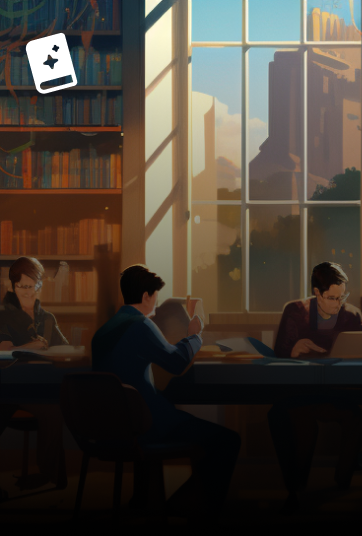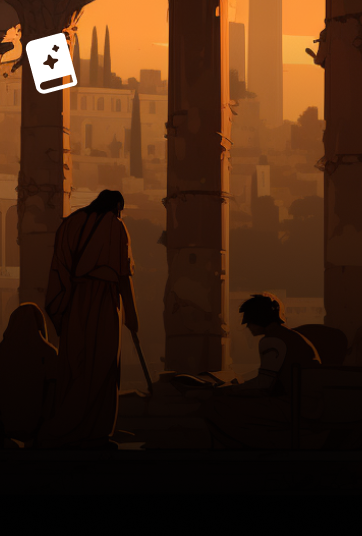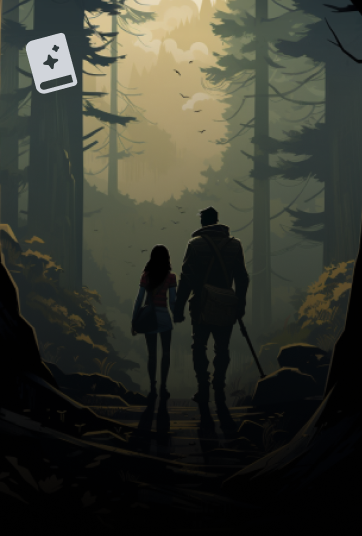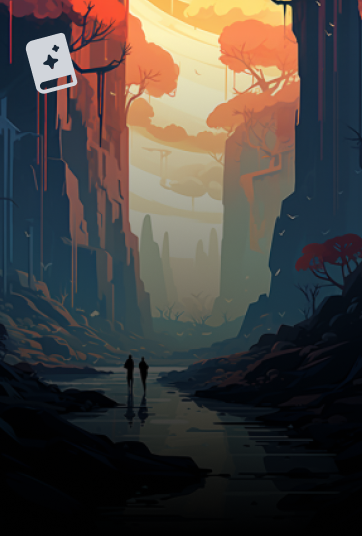
J.R.R. Tolkien
J.R.R. Tolkien has written at least 326 books. Their most popular book is The Hobbit with 2685 saves with an average rating of 4.31⭐.
They are best known for writing in the genres Fantasy, Classics, and Adventure.
Adventurous, hopeful, and inspiring are their most common moods.
Author Bio
John Ronald Reuel Tolkien (1892-1973) was a major scholar of the English language, specialising in Old and Middle English. Twice Professor of Anglo-Saxon (Old English) at the University of Oxford, he also wrote a number of stories, including most famously The Hobbit (1937) and The Lord of the Rings (1954-1955), which are set in a pre-historic era in an invented version of the world which he called by the Middle English name of Middle-earth. This was peopled by Men (and women), Elves, Dwarves, Trolls, Orcs (or Goblins) and of course Hobbits. He has regularly been condemned by the Eng. Lit. establishment, with honourable exceptions, but loved by literally millions of readers worldwide.
In the 1960s he was taken up by many members of the nascent "counter-culture" largely because of his concern with environmental issues. In 1997 he came top of three British polls, organised respectively by Channel 4 / Waterstone's, the Folio Society, and SFX, the UK's leading science fiction media magazine, amongst discerning readers asked to vote for the greatest book of the 20th century.
([Source][1])
**Early Life**
John Ronald Reuel Tolkien was born on January 3, 1892, in Bloemfontein, South Africa, to English parents. At the age of three his mother brought him and his younger brother, Hilary, back to England. Tolkien's father died soon afterwards in South Africa, so the family stayed in England and by the summer of 1896 his mother found them a home in the hamlet of Sarehole, just outside the city Birmingham.
Tolkien's family lived in genteel poverty, eventually moving to Moseley a suburb of Birmingham, just north west of Sarehole. When he was 12, Tolkien's mother died, and he and his brother were made wards of a Catholic priest. They lived with aunts and in boarding homes thereafter. The dichotomy between Tolkien's happier days in the rural landscape of Sarehole and his adolescent years in the industrial centre of Birmingham would be felt strongly in his later works.
**Education**
The young Tolkien attended King Edward's School in Birmingham in the years 1910 and 1911, where he excelled in classical and modern languages. There are six known contributions he made in the King Edward's School Chronicle. In 1911 he went to Exeter College, Oxford, where he studied Classics, Old English, Germanic languages, Welsh, and Finnish. He quickly demonstrated an aptitude for philology and began to create his own languages. In 1913 Tolkien published his very first poem, called 'From the many-willow'd margin of the immemorial Thames', in the Stapeldon Magazine of Exeter college.
**The Great War**
By the time Tolkien had completed his degree at Oxford in 1915, World War I had erupted across Europe. Tolkien enlisted and was commissioned in the Lancashire Fusiliers, but he did not see active duty for months. In this period he wrote the poem 'Goblin Feet' which got published in 'Oxford Poetry 1915'. When he learned that he would be shipped out in March 1916, he married his longtime friend Edith Bratt, the girl the poem was written for.
Tolkien was sent to the Western Front and fought in the Somme offensive. Almost all of his closest friends were killed. After four months in and out of the trenches, he contracted a typhus-like infection and was sent back to England, where he served for the rest of the war.
**Academic Career**
Tolkien's first job was as a lexicographer on the New English Dictionary (helping to draft the Oxford English Dictionary). Tolkien wrote 'A Middle English Vocabulary', but it was not published until 1922, but after it was published some copies were bound with 1st impressions of Sisam’s book, 'Fourteenth Century Verse and Prose' which was published one year before. During this time he began serious work on creating languages that he imagined had been spoken by elves. The languages were based primarily on Finnish and Welsh. He also began his "Lost Tales" a mythic history of men, elves, and other creatures he created to provide context for his "Elvish" languages. He made the first public presentation of his tales when he read "The Fall of Gondolin" to an appreciative audience at the Exeter College Essay Club.
Tolkien then became a professor in English Language at the University of Leeds, where he collaborated with E. V. Gordon on the famous edition of 'Sir Gawain and the Green Knight'. Tolkien remained at Leeds until 1925, when he took a position teaching Anglo-Saxon at Oxford University. In Leeds Tolkien found the time to make a lot of contributions on various Magazines and books like, Gryphon Magazine, Microcosm, TLS, Yorkshire Poetry, Leeds University Verse, e.o.
**Tolkien at Oxford**
Tolkien spent the rest of his career at Oxford, retiring in 1959. Although he produced little by today's "publish or perish" standards, his scholarly writings were of the highest caliber. One of his most influential works is his lecture "Beowulf, the Monsters and the Critics."
At Oxford Tolkien became a founding member of a loose group of like-minded Oxford friends "The Inklings" who met for conversation, drinks, and readings from their works-in-progress. Another prominent member was C. S. Lewis, who became one of Tolkien's closest friends.
Tolkien, a devout Catholic, and Lewis, an agnostic at the time, frequently debated religion and the role of mythology. Unlike Lewis, who tended to dismiss myths and fairy tales, Tolkien firmly believed that they have moral and spiritual value. Said Tolkien, "The imagined beings have their inside on the outside; they are visible souls. And Man as a whole, Man pitted against the Universe, have we seen him at all till we see that he is like a hero in a fairy tale?"
**"In a hole in the ground . . ."**
It was also during his years at Oxford that Tolkien would scribble an inexplicable note in a student's exam book: "In a hole in the ground there lived a Hobbit." Curious as to what exactly a "Hobbit" was and why it should live in a hole, he began to build a story about a short creature who inhabited a world called Middle-earth. This grew into a story he told his children, and in 1936 a version of it came to the attention of the publishing firm of George Allen and Unwin (now part of HarperCollins), who published it as The Hobbit, or There and Back Again, in 1937. It become an instant and enduring classic.
**Lord of the Rings**
Stanley Unwin, the publisher, was stunned by The Hobbit's success and asked for a sequel, which blossomed into a multivolume epic. While The Hobbit hinted at the history of Middle-earth that Tolkien had created in his "Lost Tales" (which he was now calling "The Silmarillion"), the sequel drew heavily upon it. So determined was Tolkien to get every detail right that it took him more than a decade to complete the 12-book "Lord of the Rings." He often left off writing the story for months to hash out a linguistic problem or historical inconsistency.
The Lord of the Rings appeared in 1954-1955 in three parts: The Fellowship of the Ring, The Two Towers, and The Return of the King. While the book was eagerly received by the reading public, critical reviews were everything but neutral. Some critics, such as Philip Toynbee, deplored its fantasy setting, archaic language, and utter earnestness. Others, notably W. H. Auden and C. S. Lewis, lauded it for its straightforward narrative, imagination, and Tolkien's palpable love of language.
The Lord of the Rings did not reach the height of its popularity until it finally appeared in paperback. Tolkien disliked paperbacks and hadn't authorized a paperback edition. In 1965, however, Ace Books exploited a legal loophole and published an unauthorized paperback version of The Lord of the Rings. Within months Ballantine published an official version (with a rather cross note about respecting an author's wishes). The lower cost of paperbacks and the publicity generated by the copyright dispute boosted sales of the books considerably, especially in America where it was quickly embraced by the 60s counterculture.
Nearly 50 years after its publication, Tolkien's epic tale has sold more than 100 million copies and been translated into more than 25 languages.
**Tolkien's Legacy**
The Lord of the Rings is a singular, contradictory work. Written in an almost archaic form, packed with strange words and obsure historical details, and lacking the modern emphasis on the "inner life," it is unabashedly antimodern. But at the same time its melancholy environmentalism and fully realized alternative world are very modern. It has often been read, among as other things, as an allegory of World War II or the Cold War, but Tolkien himself denied any such interpretation, maintaining it was simply a story to be taken on its own terms.
Its enduring appeal, however, lies not in its literary oddness or straightforward action, but in its beautifully realized world and themes of loss, self-sacrifice, and friendship. In its wake, Tolkien's work left not only a host of sword-and-sorcery imitators and devoted fans, but a lasting legacy in the hundreds of virtual worlds that have come to life in books and films since.
**Middle-earth after J.R.R**.
J.R.R. Tolkien died on September 2, 1973. His death did not mark the end of Middle-earth for readers, though. After Tolkien's death his son Christopher endeavored to complete his father's life work. He edited The Silmarillion and saw it published in 1977. In 1980 he began to publish the rest of his father's incomplete writings, culminating in the 12-volume History of Middle-earth series.
([Source][2])
[1]: http://www.tolkiensociety.org/tolkien/biography.html
[2]: http://www.tolkienlibrary.com/abouttolkien.htm





















































































